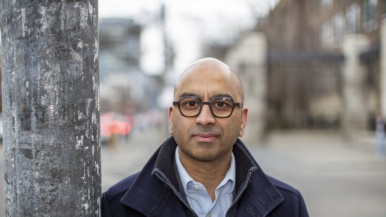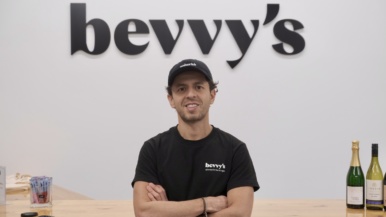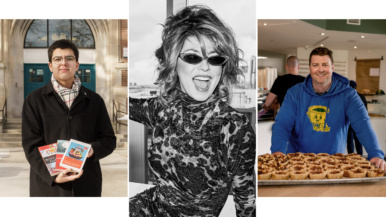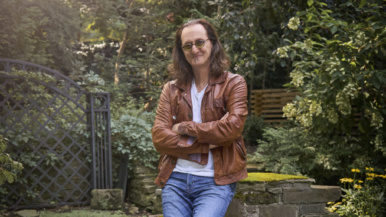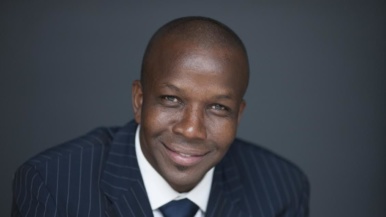Q&A: Irwin Adam Eydelnant, a food futurist who curates ice cream museums and concocts edible clouds
Up next for Toronto’s Willy Wonka: A device that will tell you what to eat

You have a doctorate in biomedical engineering. How’d you end up in food?
My plan was to become a professor. I had a position at U of T, but I became disenchanted with academia: the work gets so esoteric and siloed that real progress is difficult to achieve. I’d done some food projects, so I decided to make a business of it.
What were the food projects?
While I was in school, an acquaintance asked if I could help with a consulting project for PepsiCo. That’s where we came up with the edible cloud.
Sounds low-cal. How does an edible cloud work, exactly?
We create a cloud in a glass vessel. A small crystal vibrates in a liquid and breaks it into tiny droplets, not so small that they fly away but not so large that they condense. You can pour it, drink it, flavour it any way you want. That was how this part of my career started.
And now you run Future Food Studio in Liberty Village. How do you turn stuff like edible clouds into a viable business?
We work with large food and beverage companies like AB InBev, Kraft, Campbell’s, General Mills. We’ve done research and packaging. We’ve helped hospitality groups create technology-enabled dining rooms, where tables transform as guests interact with their meals. We helped Budweiser do workshops on taste and flavour. And we work with emerging food concepts.
Emerging food concepts—can you translate that for non-futurists?
Those are the businesses we start up, like the temporary Museum of Ice Cream in New York—120,000 people were on the waiting list to get in. One thing you could do there was eat a candy that transforms your sour taste buds into sweet taste buds, so when you eat a lemon slice, it tastes like lemonade. There are moments when people can turn on their brains and learn—or they can just take selfies in a pool of sprinkles. That works, too.
A pool of sprinkles!? Some people are inevitably going to dismiss what you’re doing as a series of gimmicks.
With everything we create, you can come in and say, “That was cool,” and leave. If someone thinks it’s a gimmick, at least they’re talking about it.
Your studio also does research, right? On what?
Our research focuses on personalized eating. We’re looking into a device that you would implant or wear that would continually monitor your physiological state. It would be connected to, say, your iPhone. When you eat somewhere, your phone would know what the menu is, where the food is sourced from and what the nutritional content is. And that would empower you to make a selection based on what you need at that moment.
In what ways will eating become “personalized”?
We’ll be able to make lettuce more salty, more sweet, more earthy, more green-tasting, whatever that means. Imagine you’re vitamin B-12 deficient; you’ll be able to get a special B-12 tomato.
What new foods are going to be on grocery store shelves in the next 10 years?
It’s not 10 years from now—it’s next year. We’ve already seen a bleeding veggie burger, and people are working on cellular agriculture: chickenless eggs, cowless milk, lab-grown steak.
Will people accept food from a lab?
They already do. Beer is made in a lab; it just looks a little different because they put a restaurant inside the brewery. If you eat kimchee on Bloor, you’re eating lab-altered food. It’s just fermentation.
People may also balk at the idea of eating crickets. Why are they suddenly on menus and at the CNE?
The World Health Organization put out a huge call for increased insect consumption. They require less input than cows and they have more protein. Two billion people already eat insects. In Toronto, it’s still small: local companies are making protein bars, pasta sauces and tofu equivalents from crickets. In North America, they’re mostly sold to cattle farmers as an alternative to soybeans and corn.
So farms and grocery stores will change. What about actual dining?
At the end of the day, it’s still going to be you and me having dinner together. None of this is going to change the social aspect of eating. There’s not going to be a pill that gives you everything.
So no trays of liquefied food à la 2001: A Space Odyssey?
That’d be nice. I love that tray.
